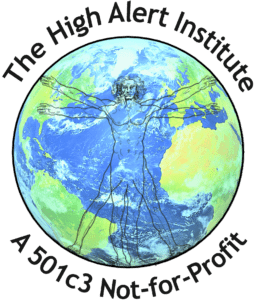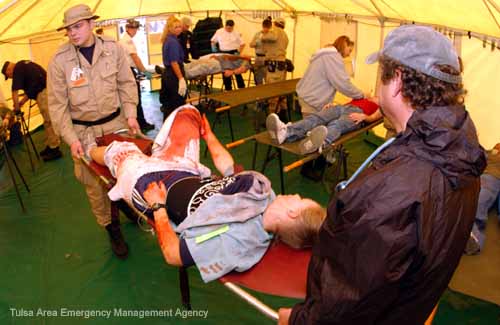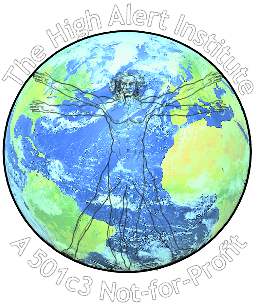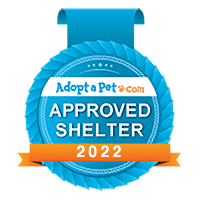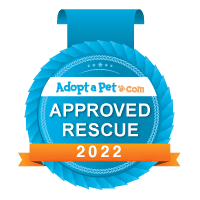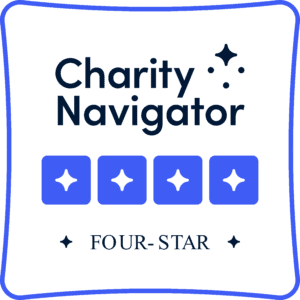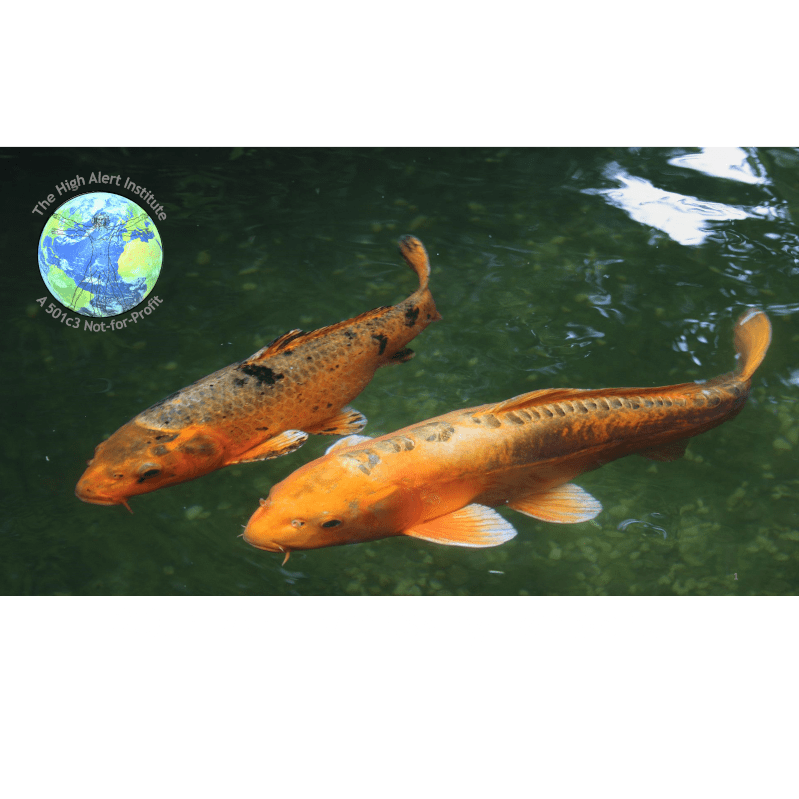Introduction:
The Homeland Security Act of 2002 provided the authority for the creation of the Department of Homeland Security (DHS). It also directed the Director of DHS to create a National Incident Management System (NIMS). Published in 2004, NIMS formed the framework for detection, mitigation, response and recovery from manmade and natural occurring disasters, events and incidents of national significance within the United States, its territories, protectorates and Indian Tribal nations. NIMS provided the framework for the creation of the National Response Plan (NRP), also published in 2004. The National Response Plan is an all-hazards, all-agencies approach to the detection, mitigation, response and recovery from disasters, whether natural or manmade events and incidents of national significance. A little known provision of NIMS created a classification system for all disaster-related resources. This classification system, the National Resource Typing System (NRTS) provides a unified cross-agency, cross-jurisdictional means of classifying all resources that are or could be used in response to a NRP/NIMS event, whether these resources are equipment or personnel.
Responsibilities of a Signatory:
All federal agencies, all 50 states, all U.S. protectorates and territories and all Tribal Nations within the scope and authority of the federal government have now become signatories to NRP/NIMS. Among these signatories are the Health Resource and Services Administration (HRSA) and the Department of Health and Human Services (DHHS), the parent agency for Medicare, Medicaid and Veteran Healthcare funding. This signatory status places certain responsibilities upon these agencies and governments, as well as providing them certain rights and privileges. These rights and responsibilities are incumbent upon all agencies that derive their funding or authority from a signatory to NRP/NIMS.
In addition to an irrevocable agreement to participate fully in any disaster, whether manmade or natural, event or incident of national significance within the region of that signatory or the authority of that signatory’s office, department or agency, all signatories to the NIMS/NRP have pre-agreed to all changes, classifications, modifications and regulations that may be promulgated by the director of DHS or the NIMS Integration Center or the NRP Implementation Center. Such changes, classifications, modifications and regulations must be implemented without modification.
NIMS Requirements Upon DHS of Significance:
Within NIMS, there are several clauses that are of significance to establishing a new industry in the area of Disaster Preparedness, Planning, Training and Evaluation within the United States. Recurrent through the document is the phrase “establish qualifications, credentials and certification for hospitals and healthcare facilities in cooperation with … and national professional organizations”. This phrase appears in every reference to hospitals and healthcare facilities in all levels of the response – administrative, financial, logistical and most notably operational. When hospitals are specifically noted, this phrase occurs with increased regularity. To date, there has been no classification, credentialing or certification system implemented by the DHS, NIMS, or NRP. The NRTS provides no guidance, as of the writing of this report, for the qualification, certification, credentialing, or typing of medical providers and, more specifically, physicians. However, the NIMS Integration Center, on September 12, 2006, quietly published a Hospital and Healthcare Facility NIMS Implementation Plan.
NIMS Responsibility Upon DHHS of Significance:
In addition to an irrevocable agreement to participate fully in any disaster, whether manmade or natural, event or incident of national significance within the region of that signatory or the authority of that signatory’s office, department or agency, all signatories to the NIMS/NRP have pre-agreed to all changes, classifications, modifications and regulations that may be promulgated by the director of DHS or the NIMS Integration Center or the NRP Implementation Center. Such changes, classifications, modifications and regulations must be implemented without modification.
The Center for Medical Services (CMS) is the DHHS agency specifically empowered and charged with the responsibility of overseeing all operations for Medicare, Medicaid and Tricare. These responsibilities include the certification of participating Hospitals and Healthcare facilities whether directly through a network of Regional Offices (RO’s) and State Agencies (SA’s) or through approved private organizations including the Joint Commission for Accreditation of Healthcare Organizations (JCAHO) and the Healthcare Facility Accreditation Program (HFAP) of the American Osteopathic Association (AOA). CMS draws its authority directly from the secretary of DHHS and is responsible for performing all the duties and responsibilities of the secretary of DHHS as applied to Medicare, Medicaid and Tricare, including but not limited to promulgating regulations and regulatory guidance towards this end.
NIMS Implementation Center Hospital and Healthcare Facility Plan:
The NIMS Implementation Center Hospital and Healthcare Facility Plan provides a new landscape for those providing Disaster Planning, Preparedness, Training and Evaluation services as well as for national organizations involved in the certification or accreditation of healthcare facilities, healthcare professionals, planning professionals and emergency management professionals.
JCAHO Accreditation Standards and Disaster Preparedness:
The Joint Commission for Accreditation of Healthcare Organizations (JCAHO) has become the de facto standard for hospital and healthcare facility accreditation. The American Osteopathic Association (AOA) has a parallel Healthcare Facility Accreditation Program (HFAP). For the purposes of this discussion, there is no practical difference in the standards set forth by JCAHO and AOA. As JCAHO is the more common accreditation, the discussion will center on the JCAHO standards.
Participating hospitals and healthcare facilities renounce “self-certification” in favor of external accreditation by JCAHO. The DHHS through CMS uses JCAHO accreditation in lieu of CMS certification for the purposes of CMS provider eligibility. Loss of JCAHO accreditation is synonymous with loss of CMS provider eligibility. JCAHO published a special compliance manual entitled Standing Together which outlines the JCAHO standards for disaster preparedness in the post-9/11 era and provides guidance on meeting these standards.
The JCAHO standards have specifically adopted the START/JumpSTART Disaster Triage System (aka Integrated Triage). JCAHO guidance also specifically addresses Disaster Preparedness and Training through Immersion Simulation Drills, referred to as “community wide” and “influx drills.” The JCAHO guidance allows tabletop exercises, but this type of drill does not fulfill the need for influx drills. JCAHO specifies that an accredited hospital must conduct at least one community wide drill every year and at least two influx drills every two years.
Center for Medical Services (CMS):
The Department of Health and Human Services (DHHS), a signatory to NRP/NIMS is the supervisory agency for Medicare, Medicaid and Tricare (Veteran’s Administration) funding through the Center for Medical Services (CMS). The regulatory agency provides certification for hospitals and other healthcare facilities either through JCAHO/HFAP or directly though its own system of state inspection offices/teams. CMS regulations carry the force of federal law under various aspects of the Social Security Act Title XVIII and XIV. The specific Federal Register sections applicable to this discussion include 42CFR482.1 and its applicable regulatory guidance. The CMS State Operations Manual provides the clearest guidance on the current interpretation of 42CFR482.1 and CMS regulations. CMS provides for both enforcement of these safety and preparedness regulations.
As an office of a NRP/NIMS signatory agency, it is incumbent on CMS to comply with the full implementation of NRP/NIMS. This compliance includes requiring NRP/NIMS compliance of all vendors (Hospitals and Healthcare Facilities) receiving funding through CMS. CMS regulations create a regulatory requirement for full NRP/NIMS compliance by all Medicare, Medicaid and Tricare certified Hospitals and Healthcare facilities. As an office of a NRP/NIMS signatory (DHHS) these requirements are no more than a restatement of NIMS and the NIMS Implementation Center Hospital and Healthcare Facility Plan. Further, CMS has elevated non-compliance with safety and preparedness to the level of an “immediate jeopardy” and thus immediate suspension of a hospital or healthcare facility’s status as a CMS (Medicare, Medicaid & Tricare) participating provider.
Correlation of the NIMS-IC Plan, CMS Regulations & JCAHO Standards:
Correlation 1:
The NRP/NIMS signatory agreement signed by DHHS and thus incumbent upon CMS to implement combined with the applicable policies, regulations and accreditation requirements of CMS, HRSA and JCAHO create a mandate for full and unmodified compliance with NRP/NIMS/NRTS and the NIMS Implementation Center Hospital and Healthcare Facility Plan is incumbent upon all hospitals and healthcare facilities.
Correlation 2:
CMS regulations and JCAHO standards both call for the use of an Incident Command structure and attention to the four phases of disaster. This paraphrases the NIMS Implementation Center Hospital and Healthcare Facility Plan requirements for the use of the Incident Command System structure and ICS education.
Correlation 3:
CMS regulations and JCAHO standards require hospitals and healthcare facilities cooperate with community based multi-agency responses to disaster as well as participating in community wide multi-agency drills. This parallels the NIMS Implementation Center Hospital and Healthcare Facility Plan and effectively implements this portion of this plan.
Correlation 4:
The combination of the CMS use of JCAHO accreditation as CMS certification and the deferment of certification by hospitals to JCAHO makes JCAHO accreditation the de facto certification to fulfill the NIMS Implementation Center mandate for “self-certification.” Thus JCAHO accreditation also has become the de facto certification of compliance with the NIMS Implementation Center Hospital and Healthcare Facility Plan for each individual Hospital or Healthcare Facility.
Correlation 5:
CMS regulations and JCAHO standards prescribe that an accredited hospital or healthcare facility must develop and publish for CMS/JCAHO review an operational budget including the provision of capital for all aspects of business operation. This echoes the NIMS Implementation Center Hospital and Healthcare Facility Plan provisions regarding Preparedness Funding.
Correlation 6:
CMS regulations and JCAHO standards require revision of existing plans as well as regular updating of plans in light of both pre-event Vulnerability Analysis and Post Event Review (After Action Review). These clauses validate the NRP/NIMS and NIMS Implementation Center Hospital and Healthcare Facility Plan requirements for plan revision and regular reevaluation.
Correlation 7:
CMS regulations and JCAHO standards detail requirements for both Community Wide and Surge (Influx) disaster drills. Further, both organizations discourage Tabletop Exercises in favor of Live Patient and Simulator Environment Drills. The detailed and recurrent reference to these drills emphasizes the weight and importance placed on this phase by these regulatory and accrediting agencies. This emphasis reflects the same importance given to disaster drills by NRP/NIMS and NIMS Implementation Center Hospital and Healthcare Facility Plan.
Correlation 8:
CMS regulations and JCAHO standards specify that hospitals and healthcare facilities must maintain sufficient supplies and resources including generators, potable water, medications and oxygen to ensure the safety of all staff, patients and residents. These requirements are included in multiple key sections of the regulations including Life Safety, Facility Operations, Patient Safety and Human Resources/Personnel. The JCAHO and CMS sections are actually more stringent and specific than the comparable NIMS Implementation Center Hospital and Healthcare Facility Plan portions.
Correlation 9:
CMS regulations and JCAHO standards specify the use of plain English and a common nomenclature in all communications without allowance for a different language or nomenclature in event of disaster. This common language requirement is far more stringently worded than the associated NIMS Implementation Center Hospital and Healthcare Facility Plan sections in large part owing to the high priority placed by both CMS and JCAHO on the 1999 To Err is Human report published by the Institute of Medicine.
Implication of the NIMS-IC Plan, CMS Regulations & JCAHO Standards:
Implication 1:
Whether by design or serendipity, recently published CMS regulatory changes and progressive refinement of JCAHO standards have resulted in accreditation criteria that now closely approximate those put forth in NRP/NIMS and the NIMS Implementation Center Hospital and Healthcare Facility Plan. This has the effect of creating a regulatory mandate for hospitals and healthcare facilities to fully implement NRP/NIMS and the NIMS Implementation Center Hospital and Healthcare Facility Plan. It is the position of High Alert that this creates a new market for Disaster Planning Services and Disaster Preparedness, Response & Recovery Education.
Implication 2:
Owing largely to the Nationals Patient Safety Program initiated by JCAHO and CMS in response to the Institutes of Medicine To Err is Human report, recently published CMS regulatory changes and progressive refinement of JCAHO standards have resulted in accreditation criteria for resource acquisition/inventory and common communication nomenclature that exceed those put forth in NRP/NIMS and the NIMS Implementation Center Hospital and Healthcare Facility Plan. Further, both agencies have tied these criteria to the facility safety/Life Safety criteria for accreditation.
Implication 3:
Following the catastrophic events of the 2004 and 2005 hurricane season and the recent National Academies of Science reports regarding Hospital and Community Disaster Preparedness, recently published CMS regulatory changes and progressive refinement of JCAHO standards have resulted in accreditation criteria for disaster planning, education and drills that exceed those put forth in NRP/NIMS and the NIMS Implementation Center Hospital and Healthcare Facility Plan. Further, both agencies have tied these criteria to the facility safety/Life Safety criteria for accreditation.
Implication 4:
Because certification by CMS and indirectly JCAHO accreditation are required for Medicare, Medicaid and Tricare insurance participation and because CMS and JCAHO have tied much of their disaster preparedness criteria to the facility safety and Life Safety certification criteria, violation of these criteria would immediately suspend CMS certification and thus immediately suspend Medicare, Medicaid and Tricare insurance participation by the violating hospital or healthcare facility. Further, all private insurance suspends program participation in the event o a CMS suspension. Thus violation of the CMS and/or JCAHO disaster preparedness criteria and by extension the NIMS Implementation Center Hospital and Healthcare Facility Plan holds significant financial penalties for any hospital or healthcare facility.
Conclusion:
Based on the comprehensive review of CMS regulations, JCAHO standards, NRP/NIMS and the NIMS Implementation Center Hospital and Healthcare Facility Plan, it is the position of High Alert that this creates a market pressure towards Comprehensive Immersion Simulation Training that includes a “Crawl – Walk – Run” Disaster Exercise program for staff and ICS training for administration. This program can be delivered in 5 to 6 days and provide all required education and drills to meet all patient safety, disaster preparedness/response and community/multi-agency drills required under CMS regulations, JCAHO standards, NRP/NIMS and the NIMS Implementation Center Hospital and Healthcare Facility Plan. Such a program provide client hospitals and healthcare facilities with comprehensive disaster planning, preparation and response training, significant patient safety improvement through the use of simulation based training and demonstrable cost savings compared to the present market approach to these processes while protecting these clients from potential financial harm.
The fortuitous conflagration of CMS regulations, JCAHO standards, NRP/NIMS/NIMS Implementation Center Hospital and Healthcare Facility Plan revisions, National Academies of Sciences Reports on Hospital and Community Preparedness and the Institutes of Medicine To Err is Human report create an unexpected environment that yields de facto mandates for full and unmodified implementation of the NIMS Implementation Center Hospital and Healthcare Facility Plan. Further the market is ripe for the introduction of the next evolution disaster preparedness training.
Immersion Simulation Training will extend the disaster training to the inpatient bedside environment and include high fidelity human patient simulators to train not only disaster and terrorism response/treatment, but also patient safety and other issues raised in the Institute of Medicine report To Err is Human. This model creates a training environment akin to that used to train airline pilots and fighter pilots. Teams trained in this model we employ techniques patterned after those used to train NASCAR Pit Crews to work quickly and accurately in a high risk, high stress and fast paced environment. NDLS-FL and its partners cannot afford to miss such an opportunity.
